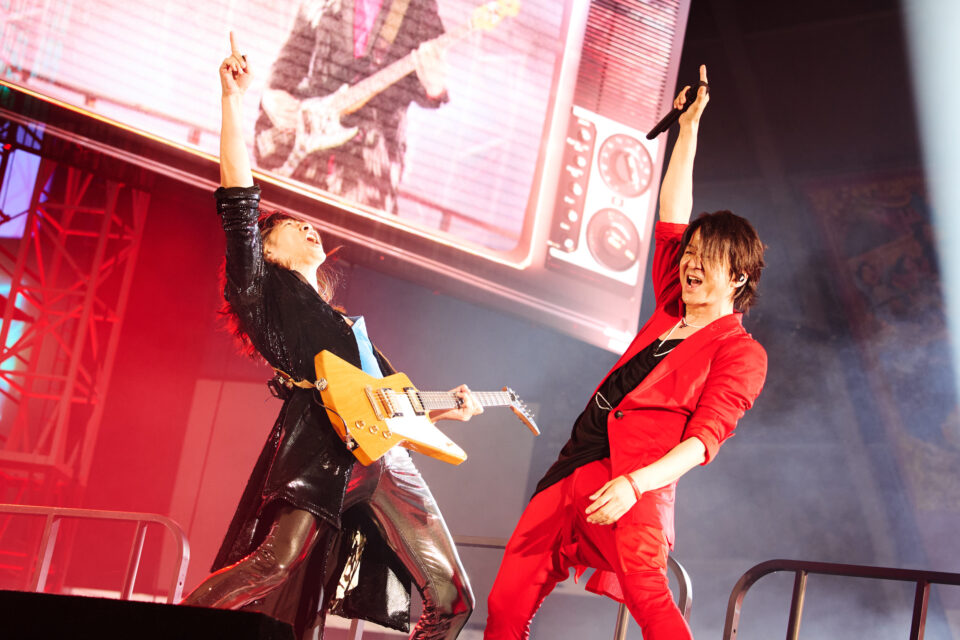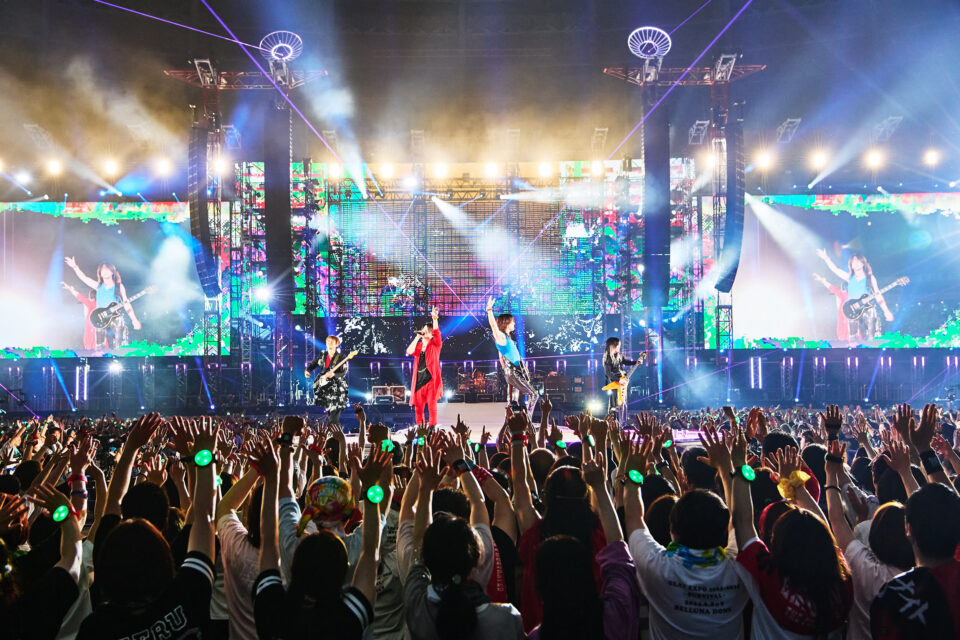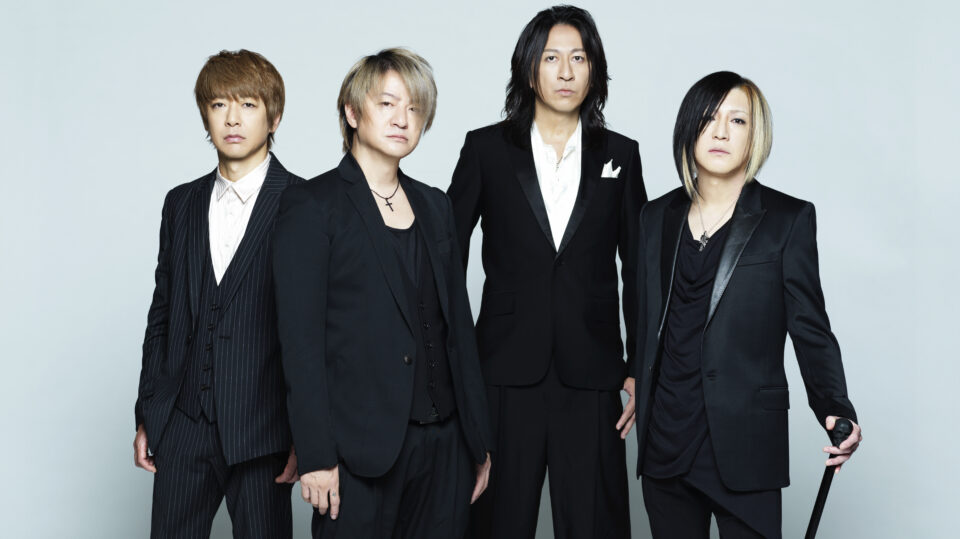Glay’s Legacy: 30 Years of Rock Excellence
Speaking about its 30th anniversary, collaborating with Jay of Enhypen, and its legacy in Japanese rock music, Glay shares its thoughts
Glay comes from Hakodate, in northern Japan. It all started with Takuro and Teru in 1988, joined by Hisashi and Jiro later, and debuted in 1994 with the single “Rain.” Ever since, the band has weathered the ever-changing tides of the music scene, adapting and evolving while preserving what “it” is—one of the most enduring and influential rock acts to emerge from the Land of the Rising Sun.
Through its music and unshakable bond with fans and listeners, Glay has etched its name in the upper crust of Japanese rock music. And it’s my absolute honor today to have the members share words on this incredible sustained ride as Glay observed its 30th anniversary a while ago. While heavily influencing the Japanese music space and inducting itself into its cult status, Jiro, however, is still unsure “if there’s been any remarkable evolution,” because he asserts that they’ve carried on without any breaks for three decades, “but the fact that we still enjoy making music today shows that we’re growing every day. Keeping up the motivation and continuing as a band for so long is very tough, so I think we’ve influenced the rock scene in that way,” he says.
Earlier this year, Glay featured as a special guest for the esteemed British rock band Queen at the Queen and Adam Lambert concert in Sapporo, and thereupon released a 30th anniversary commemorative single entitled “whodunit,” collaborating with K-pop sensation Jay (Enhypen). “When we were looking for a singer to partner with Teru for our 30th anniversary celebration, we discovered Jay from Enhypen, who is making huge waves globally and loves rock ‘n’ roll. Naturally, we made the offer knowing about its presence,” Jiro explains. The music video is jazzed up by visuals drawn from the world of Eiichiro Oda, as Takuro points out. “I think this collaboration with Jay is a miracle of sorts that wouldn’t have happened if we hadn’t persevered for 30 years,” Hisashi adds. “I feel that the meaning of continuing with music is to keep generating new energy through interaction with different eras.”
In my mind, this collaboration is about the power of music to bring people together, regardless of genre or cultural barriers. It elevates Glay as a part of this global music community. Indeed, its success rests in its ability to balance a distinctive sound and embrace a continuous process of musical growth and experimentation. From the raw, energetic booming numbers of infectious music to the even richer introspective rock and pop anthems, Glay consistently exhibits remarkable versatility, incorporating diverse elements from different rock genres alongside punk, electronic, R&B, and more into their arrangements—an impressive range and a commitment to creativity within Glay’s sound.
Glay, known for being a trailblazer in the Japanese visual kei scene, ranks among the top ten artists on Japan’s all-time best-seller list, with an estimated 51 million records sold as of 2008, including 23 million albums and 28 million singles. The band members have made it through time only to return stronger and more unified than ever, indicative of Glay’s very identity—a tale of grit and camaraderie that has kept them going for years—and how they’ve managed to get through the music industry’s maze of rules and volatility while still being open and true to the fans.
As Glay keeps turning a corner and diversifying its palette of songs, it offers a shining instance—a narrative of single-mindedness and shared passion for music—that has withstood whatsoever, confirming Glay’s legacy as one of Japan’s most beloved and significant rock bands. Excerpts.
Is there an inspiration behind Glay’s unique blend of rock music?
Hisashi: The approach changes by incorporating each member’s ideas into Glay’s standard style, and a new standard is born. For example, in the case of EDM, just using a TR-909 for the drums changes the approach to the bass, the guitar recording style shifts to editing waveforms while recording, and the ideas for vocals and choruses are transformed. When the foundation changes, it reflects in the sounds you dub as well.
What is the beating heart of your sound, and what do you believe sets Glay apart from other rock bands?
Hisashi: Takuro’s message to the times and the members’ interpretative approach to that message is simple, straightforward, and with firm conviction, without being eccentric.

How has the band’s approach to songwriting and performance evolved since its inception? Which of your favorite songs best captures the spirit of your music and who you are?
Jiro: I’ve always been dedicated to rock ‘n’ roll, but in recent years I’ve been listening to a lot of R&B, which has significantly changed my approach to bass playing and songwriting. However, I find myself going right back to rock ‘n’ roll again, so I guess the rock ‘n’ roll blood is still flowing in my body. The song that describes me is the theme of “Shutter Speeds.”
Please share your story of being a leading act in the visual kei scene and your pioneering role in it.
Hisashi: I’ve been greatly influenced by Japanese culture, anime, games, and music. Visual kei is a very unique Japanese subculture based on gothic themes, and I truly enjoyed the variety of performances.
Even today, visual kei continues to evolve and change. Glay, which has continued for 30 years by facing the tides of time head-on, still takes pride in Japanese culture and believes in the entertainment we can offer today.
It’s truly an honor if we’ve been able to contribute even a little to the greatness of Japanese culture, not to mention visual kei.

Glay is recognized for its avant-garde performances. What impact has its visual aesthetic, in your experience, had on other artists in the industry?
Jiro: I’m not quite sure how we have influenced other artists. However, I think collaborating with Enhypen’s Jay was such an unexpected combination, like, “Glay, you’ve got your eye on an interesting point!” If you say it’s the influence on others, it might be.
How have you navigated cultural differences in your music and maintained the band’s relevance and connection with your listeners over the years?
Jiro: Since our debut, the four members have had completely different ways of thinking and fashion styles, but we still want to “make Glay better” and “dream with Glay,” so I believe that’s why our fans see us and think, “Glay always looks like they are having fun!” and can relate to that. It’s the band’s role to lead and entertain those people.
With so much time spent making music and thriving in the industry, what has been your biggest takeaway?
Hisashi: I believe that being healthy trumps everything; that’s all it takes.
How does Glay envision the future of its music and legacy as you continue your journey?
Hisashi: I think the quote “learning from the past” is universal, and it is exactly right. I feel the same strength in the splendor of classical traditions and the youth culture that is ahead of its time. Of course, the achievements of the past and the future are here to stay, so the expectations for the future are boundless.
Any messages for your Indian fans and readers of Rolling Stone India?
Hisashi: I’m Hisashi, and I play guitars along with other instruments in the band Glay. I have been to various countries, and I have always felt and said that there are no language barriers for those who love music and alcohol. But I know that’s not always the case. Well, let’s have a toast when we get a chance to meet anyway.
Jiro: Glay might be a band that doesn’t go abroad as often as other Japanese artists, but we want to visit your city! To all our fans in India, we hope to see you soon!








